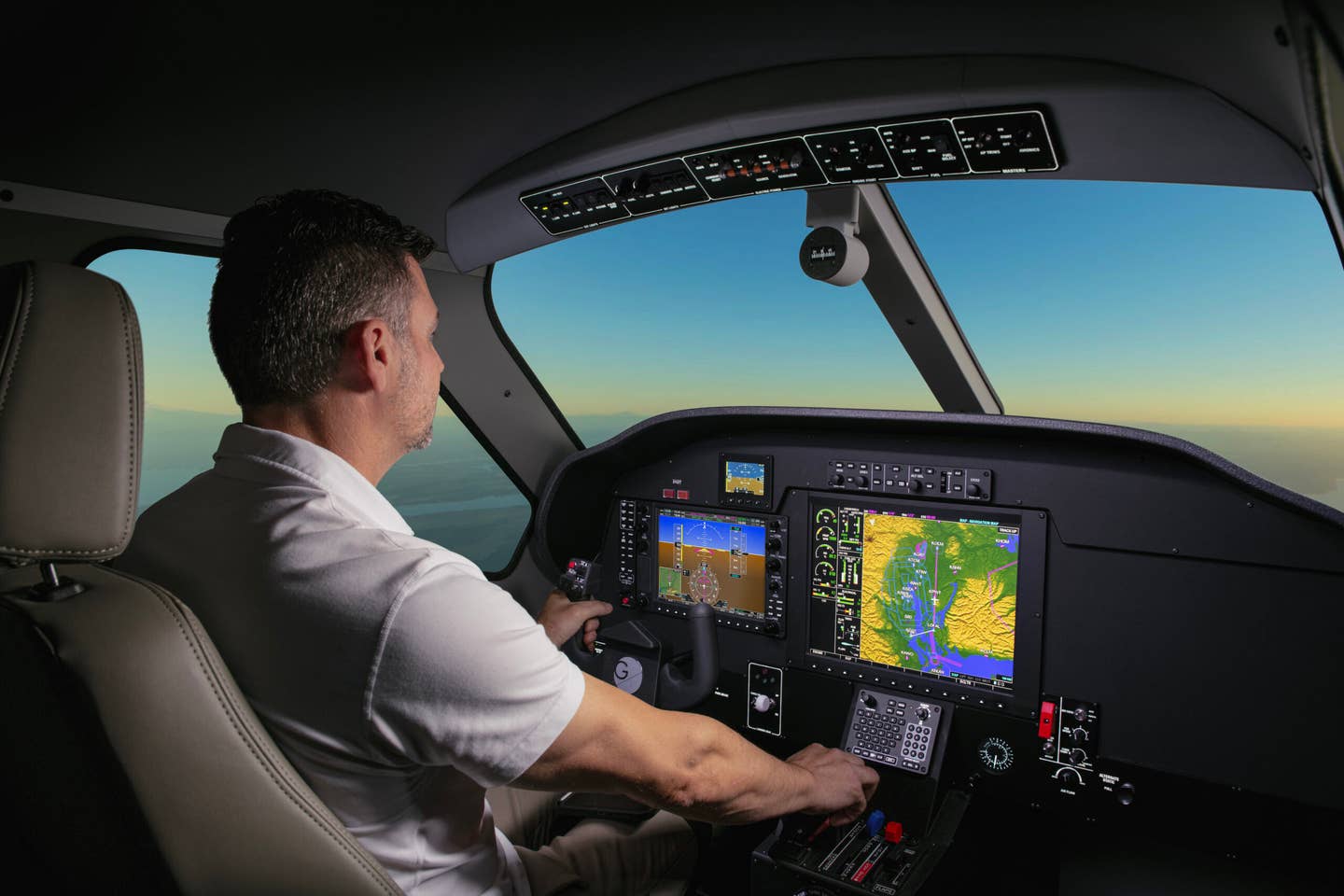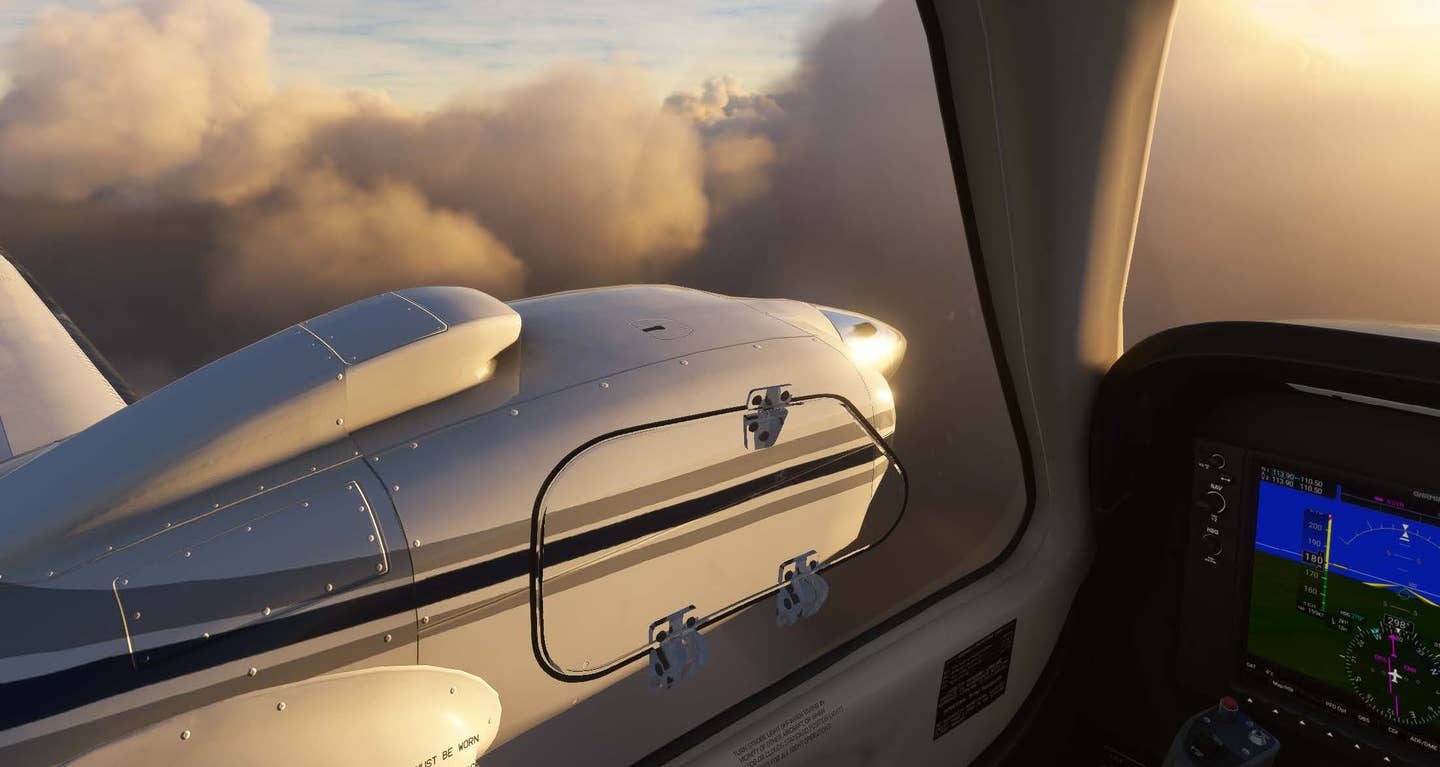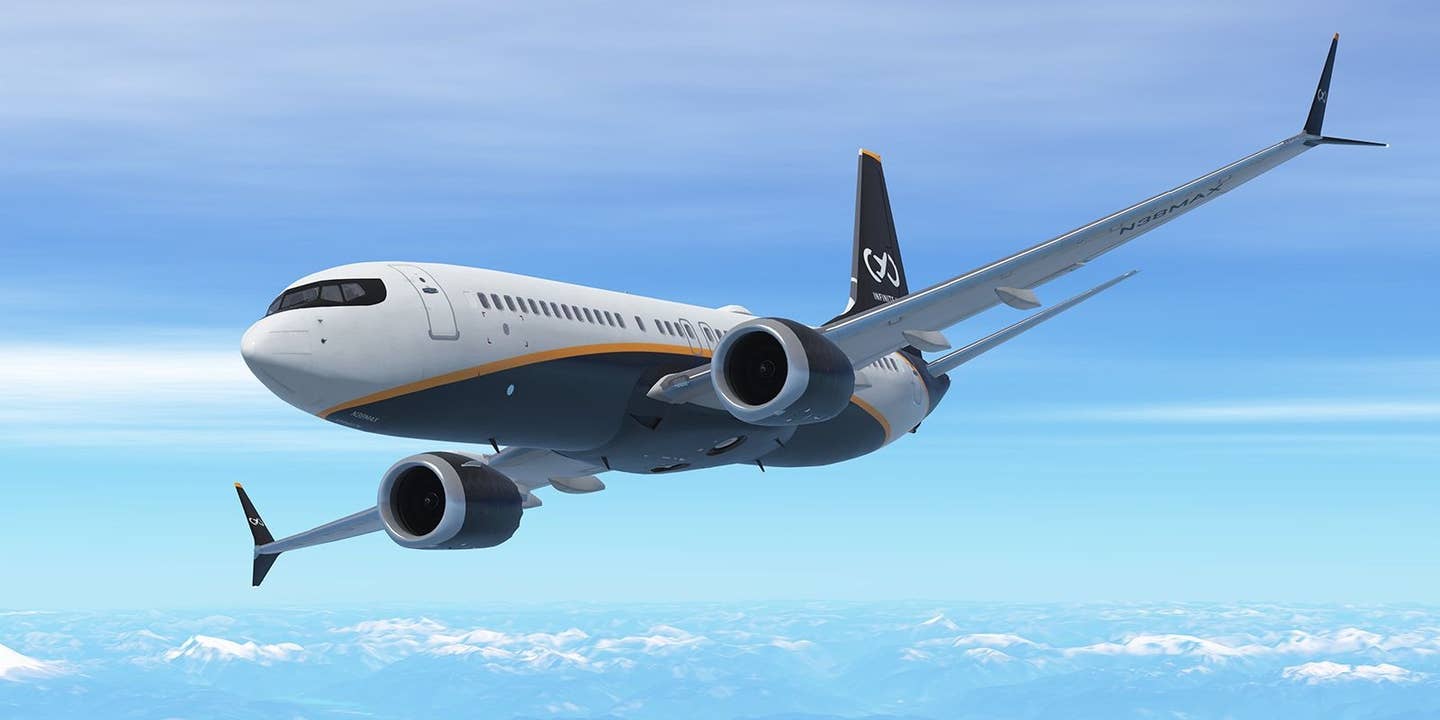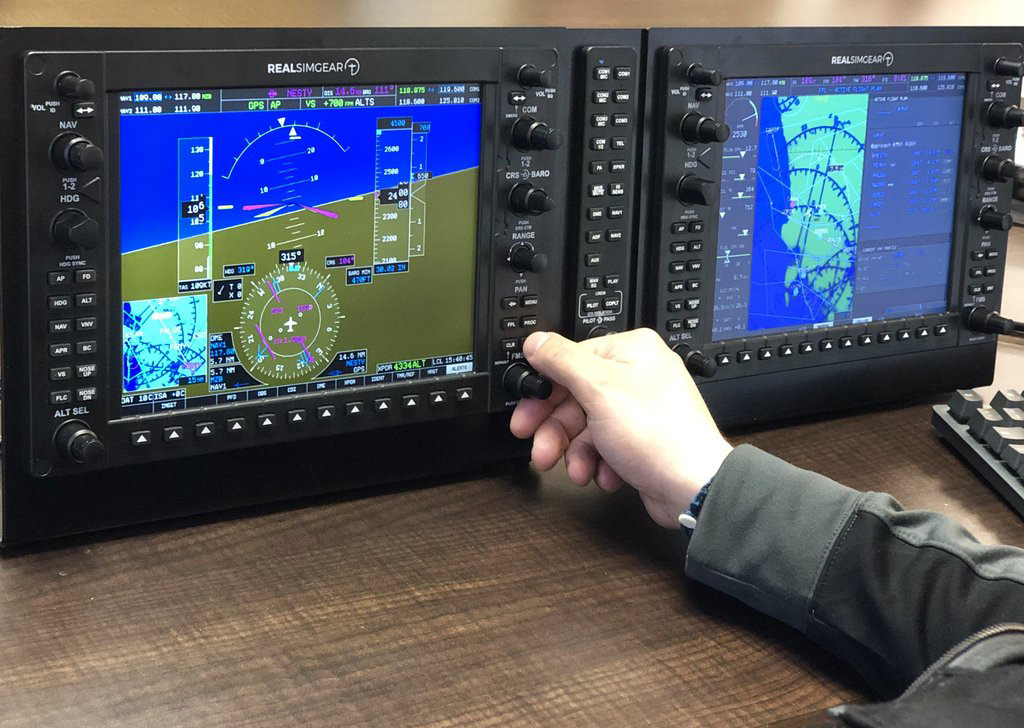Practicing the Impossible Turn
Microsoft Flight Simulator can be used to try a 700-foot turn back at engine failure as much as you want with risk only to your pride.
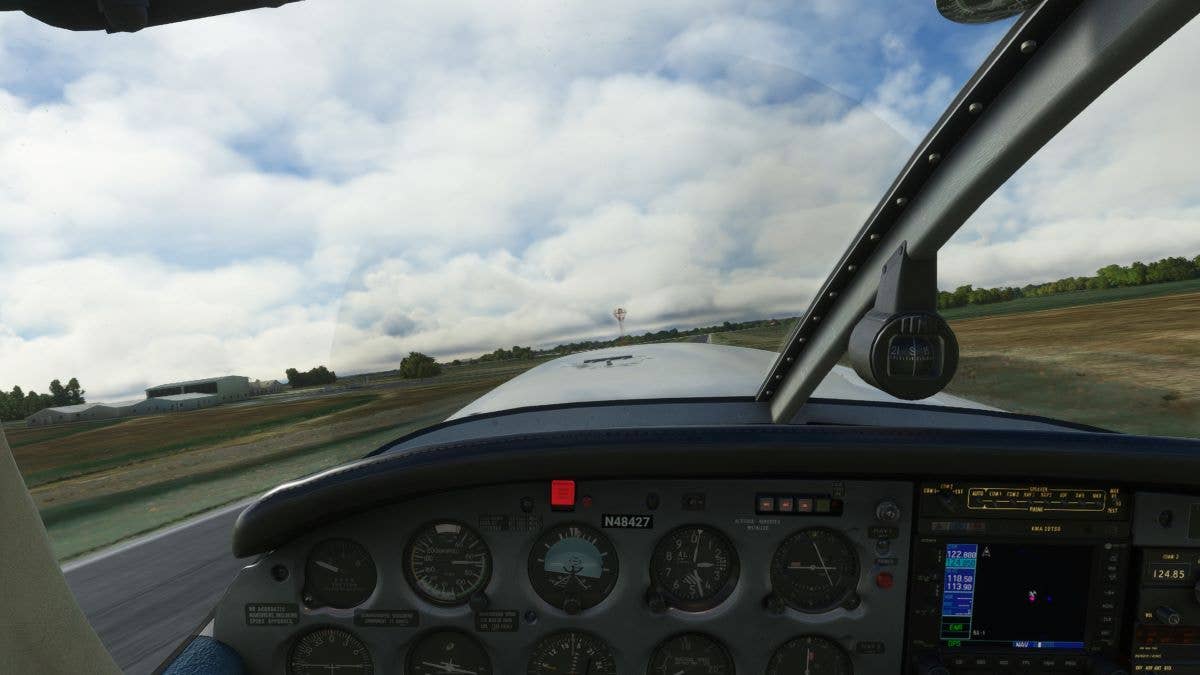
Executing the “impossible turn,” or turn back to the runway if your engine quits, in a sim is an exercise in mental awareness and “big picture” thinking. [Image courtesy: Peter James]
As an experienced CFII (certified flight instructor instrument) in the early days of my career, and as a reader of FLYING, we all know about the “impossible turn” or turn back to the runway if your engine quits at exactly the wrong time.
The safety altitude most instructors teach is to never turn around if less than 1,000 feet above the airport elevation. It is always better to land straight ahead, or at the most a few degrees either left or right to avoid the hardest objects in your path.
If you’re an expert, or perhaps maybe more daring than you ought to be, perhaps, the absolute minimum a turn back could be accomplished is 700 feet agl. With no more risk other than your pride, we can try the 700-foot turn back at engine failure as much as you want in the new Microsoft Flight Simulator 2020 (MSFS).
Doing it in a sim has some incredible benefits to learn from. First, it’s an exercise in mental awareness and "big picture” thinking.
Before imitating these sim scenarios, I’d highly recommend getting FSRealistic add-on to enhance ground noises, cockpit vibrations, and effects, especially when landing off-road like we are about to do. It’s my favorite enhancement to date, for the MSFS series.
One other important option is to disable any “realistic” crash modeling. The sim doesn’t portray impacts in the classic sense and the result is annoying—fade to black and a message that you have crashed, resetting you to the beginning.
To have more realistic moments, and endure sink rates higher than just 700 fpm, setting the sim to “easy mode” gives you a more realistic impact. It is opposite of the way they intended. So for horsing around, off-road landings, emergency training, please disable “crashes” by going into the menus and do the following:
- Options/ Assistance options/ failure and damage, then disable both impact damage and aircraft stress damage.
Once these features are disabled, you don’t have to worry about landing in storms, bouncing, or overstressing your aircraft into a message or reset.
MSFS offers a great visual simulation with some pretty incredible flight models. I used an airplane I often flew in real life, a Piper Arrow III. The flight modeling is great in the Just Flight Piper Arrow III, easily available on the Microsoft Marketplace in sim.
In this example, I used real weather in a random location in Nebraska, at an elevation of about 2,500 feet. The temperatures were ISA standard, about 15 degrees Celsius (59 degrees Fahrenheit) on the ground, so climb performance would not be in the “hot and high” category. The only detriment was a slightly higher elevation, so you could account for some added difficulty. You can set the sim to give random fails, but in this example I cut the mixture at about 3,200 feet msl (700 agl).
I immediately started a fairly steep turn, lowered the nose, holding airspeed at about 75 to 80 kts, aware that the bank angle would raise stall speeds. I kept the airplane “clean” with no flaps or gear until at least wings level, hopefully aiming at the runway or airport environment.
Stall horn peeping, I whizzed it around and did line up on final. I actually lowered the nose, gained some more speed then “zoomed” a bit up to gain or at least stop further altitude loss. Once I knew the airport boundary would be made, I yanked in 1, and then a second notch of flaps.
The gear thumped down during the last 10 feet, and I could feel it.
Wing's Length Away
Our second adventure is based on the old private pilot training exercise to always keep a landing site a wingspan’s distance away from you.
The old adage is that anything that rests under your wingspan should be reachable if your engine quits and your gliding range is roughly that of your wingspan distance at your viewing angle. I am always scanning around for safe havens in both real and simulated life. Even in the business jet I fly professionally, I think of this all the time. We all know a particular US Air pilot that thought this way too.
In this next scenario, we will call any highway or road a safe makeshift runway. In some cases, roads can exceed the straight-away lengths of most GA airports.
You can see the red master caution with a horn reminding me of the gear still up at below a pre-designed manifold pressure. The oil, vacuum, and alternator lights are on too.
Don’t get close to cars immediately ahead of you as panicked drivers will only do one thing, slamming on their brakes in a sudden panic, not knowing how to deal with an airplane approaching in the rearview mirror.
Coming to a nice stop was very satisfying. Unscathed! I wonder if the local sheriff will stop by to give me a citation?
Don't Buy the Farm, Use It
In my third adventure of the day, I decided to try another favorite old instructor routine that I used to pull on students to surprise them. Having big wide open fields nearby is always comforting. Doing my sample flights here in MSFS, choosing Nebraska as the place to demonstrate was as easy as you could get.
This time, however, my turn back was too wide, and there’s no way I could have made the runway as seen in the left corner of this pic. Instead, I chose the least dangerous option, which is straight ahead in the nicely plowed fields.
Choosing which one was the only quick decision to make. Here I am without an engine, with the three glowing annunciations showing. The engine is still windmilling. Gear and flaps are up but not for long. Remember your soft field landing technique and try to come in with as little sink rate as possible as the gear could dig in. Even landing gear up could be a better option. Here, I quickly lowered it since the ground looked groomed. I barely made it over the first row of trees, then plunked down, rolling and banging along.
I was happy with how realistic the landing on soft soil felt. Bouncing and banging along was great, and using the Honeycomb controls with Thrustmaster pedals and quality foot brakes made this off-roading adventure all the more believable.
This is one of the greatest examples of how a desktop sim can help you plan, and think about the unlikely events that could pop up in your flying career. Although not an exact science, it’s a precise tool for mental awareness, quick thinking and problem-solving.

Sign-up for newsletters & special offers!
Get the latest FLYING stories & special offers delivered directly to your inbox

